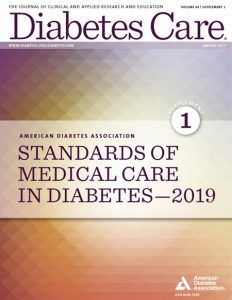August Newsletter | Diabetes Medications Approved & Supplements Reviewed
August Newsletter Now Available!
In our August Newsletter, we highlight several exciting new releases! Nasal Glucagon has been approved, generic Dapagliflozin has been released, and Cleveland Clinic has synthesized a chart of supplements and their efficacy for people with diabetes!

Read this month’s newsletter before August 16 to see how you could get a $50 discount.
August Newsletter Topics Include:
- Nasal Glucagon Approved
- Nutritional Supplement Chart for People With Diabetes
- 5 Steps to Stop Sitting & Increase Longevity
- Diabetes Educator Conference “Making a Difference” Scholarship Awarded
- Generic SGLT-2 Inhibitor Approved
- New Technology Course & Networking Mixer at San Diego Live Seminar
- Women Leaders Conference Save the Date – December 6
- CDCES Coach App® Rated by DANA | $50 Discount for App Survey
Click here to read our newsletter
Sign up for Diabetes Blog Bytes – we post one daily Blog Byte from Monday to Friday. And of course, Tuesday is our Question of the Week. It’s Informative and FREE! Sign up below!
[yikes-mailchimp form=”1″]Dapagliflozin biosimilar gets tentative FDA approval
The marketing application for a generic version of Farxiga, or dapagliflozin has received tentative approval from the US Food and Drug Administration (USFDA). Alembic Pharmaceuticals received a nod for its abbreviated new drug application for Dapagliflozin Tablets in 5 mg and 10 mg strength.

The approved product is therapeutically equivalent to the reference listed drug product Farxiga Tablets.
No information on pricing has been posted yet, but the hope is that as patents expire, more affordable generic diabetes medications will be made available.
Dapagliflozin belongs to the SGLT-2 Inhibitor class of diabetes medications. To read more, download our FREE Diabetes Medication Pocket Cards.
Sign up for Diabetes Blog Bytes – we post one daily Blog Byte from Monday to Friday. And of course, Tuesday is our Question of the Week. It’s Informative and FREE! Sign up below!
[yikes-mailchimp form=”1″]Medical Myths – Top 10 List

Over 400 common medical practices were contradicted by rigorous research. For this blog, I highlight six widely held theories that are refuted by thousands of studies.
For all 10 myths below and more, we invite you to check out this scientific review led by Dr. Vinjay Prasad of Oregon Health and Science University who said, “Very smart and well-intentioned people came to practice these things for many, many years. But they were wrong.”
Myth – Fish oil reduces risk of heart disease
Truth – In a trial involving 12,500 people at risk for heart trouble, daily omega-3 supplements did not protect against heart disease.
Myth – Step counters and calorie trackers help people lose weight.
Truth – Based on a study of 470 “dieters” who were using digital assistance and tracked for two years, those who wore tracking devices actually lost less weight than those who followed standard advice.
Myth – A single dose of oral opioids to treat emergency room patients works better than medications like aspirin and ibuprofen.
Truth – Clinical trial showed that medications like aspirin and ibuprofen are much safer alternatives which relieve pain just as well among emergency room patients.
Myth – Ginkgo biloba protects against memory loss and dementia
Truth – Made from the leaves of ginkgo trees, this supplement was widely used is promoted as a way to preserve memory. A large federal study, published in 2008, definitively showed the supplement is useless for this purpose.
Myth- Peanut allergy risk is higher if a child is exposed to peanuts before age three.
Truth – Children exposed to peanuts before age 1 have no greater risk of peanut allergies.
Myth – Lifelike doll carried around by teenager will prevent unplanned pregnancy
Truth – It turns out that these “infant simulators” were actually associated with a slightly increased risk of pregnancy.
For a complete list as published in the New York Times article, 10 Medical Myths We Should Stop Believing. Doctors, Too.
Sign up for Diabetes Blog Bytes – we post one daily Blog Byte from Monday to Friday. And of course, Tuesday is our Question of the Week. It’s Informative and FREE! Sign up below!
[yikes-mailchimp form=”1″]
Victoza, now approved for children with Type 2
Novo Nordisk announced, liraglutide (Victoza) has been approved for young people with Type 2 diabetes between the ages of 10-17 years old.
The U.S. Food and Drug Administration has approved the medication for children that was previously only approved for adults.
“As the first glucagon-like peptide-1 (GLP-1) receptor agonist approved for children and adolescents with type 2 diabetes, liraglutide (Victoza) provides this population with a new treatment option beyond metformin and insulin for the first time in 19 years.”

With the increasing rates of Type 2 diabetes in children, this offers clinicians a new treatment option outside of metformin and insulin.
“Type 2 diabetes is the most common form of diabetes, normally occurring in people 45 years or older, but its prevalence among the younger population has climbed dramatically over the past 20 years.”
Type 2 diabetes, which was once considered a rare condition in the pediatric population, now accounts for about 15% to 45% of all newly diagnosed cases of diabetes in children and teenagers.
The approval of liraglutide (Victoza) could help considerably with the treatment of Type 2 in children.
Original Article: FDA approves Victoza® for the treatment of type 2 diabetes in children and adolescents aged 10-17 years – Novo Nordisk
Sign up for Diabetes Blog Bytes – we post one daily Blog Byte from Monday to Friday. And of course, Tuesday is our Question of the Week. It’s Informative and FREE! Sign up below!
[yikes-mailchimp form=”1″]Express Scripts to Charge max of $25 a month for insulin

More than 30 million Americans have diabetes and approximately 7.4 million require insulin. Between 2002-2013, the average price of insulin nearly tripled, creating financial hardships for people who rely on it to survive.
One company, Cigna’s Express Scripts, is working to lower the price for consumers by the end of the year. “Express Scripts, which manages prescription drug insurance for more than 80 million people, is launching a “patient assurance program” that Steve Miller, Cigna’s chief clinical officer, says “caps the copay for a patient at $25 a month for their insulin — no matter what.”
As the voices of people who rely on insulin are beginning to be heard, lawmakers are starting to take notice. The increase in prices has been deadly for some.
The full retail price of some insulins can cost up to $1,400 per month. Under Scripts new program, people who normally would have to meet their deductible will stay pay only $25 per month for their insulin.
A recent study conducted at Yale found that 25% of people utilizing insulin will dilute or skip doses altogether in order to save money. This can a
“The bottom line is that drug prices are set by drug makers,” he told lawmakers. “The list price for insulin has gone up dramatically — and that’s the price that many patients pay. This is what needs to come down. It’s as simple as that.”
Express Scripts will begin to offer the $25 co-pay deal close to the end of the year to those not covered by a government insurance program.
Insulin should be affordable for all. Click here for additional resources on how you can make a difference.
To learn more: “Express Scripts Takes Steps to Cut Insulin’s Price to Patients” – NPR
Sign up for Diabetes Blog Bytes – we post one daily Blog Byte from Monday to Friday. And of course, Tuesday is our Question of the Week. It’s Informative and FREE! Sign up below!
[yikes-mailchimp form=”1″]Type 2 diabetes: Gut bacteria may influence drug effectiveness
 415 million people across the globe have Type 2 Diabetes and it is now considered a “global epidemic.”
415 million people across the globe have Type 2 Diabetes and it is now considered a “global epidemic.”
Diabetes drugs have varying success from person to person. New research conducted by Hariom Yadav, Ph.D., an assistant professor of molecular medicine at the Wake Forest Baptist Medical Center, studies have suggested that gut bacteria is a key indicator to a drug’s success. This research suggests a correlation between medication effectiveness and the gut bacteria of a person with Type 2 Diabetes.
“For example,” explains the lead researcher, “certain drugs work fine when given intravenously and go directly to the circulation, but when they are taken orally and pass through the gut, they don’t work.”
Metformin on the other hand works best when given orally. Based on the study, researchers believe that the individuals’ gut bacteria are affecting how well a person metabolizes the medication.
The study focused on whether or not the microbiome “boosted or inhibited” the effectiveness of the medication. “Our review showed that the metabolic capacity of a patient’s microbiome could influence the absorption and function of these drugs by making them pharmacologically active, inactive, or even toxic,” said Yadav.
Although this field of research is only about 10 years old, there are strong signs that our gut microbiome play a key role in our overall health this may include how we interact with medication. Yardav plans to continue to study the gut bacteria as it relates to the treatment of disease.
To learn more: “Type 2 diabetes: Gut bacteria may influence drug effectiveness” by Medical News Today
 Join the wonderment as we explore the role of our Microbiome
Join the wonderment as we explore the role of our Microbiome
This one-hour complimentary journey will expand your view of how trillions of bacterial hitchhikers profoundly influence our health. We will discuss how foods, the environment and our medical practices have impacted our gut bacteria over time and strategies we can take to protect these old friends. You can either view the webinar for free, or to receive additional CEs, purchase the webinar.
View the webinar now:
This webinar is free and you can view at any time, on any device.
To enjoy this webinar and earn CEs, purchase here – $19
How accurate are Glucose Meters?
It is assumed that glucose meters are accurate if they are FDA cleared, but often that is not the case.
The FDA is currently reviewing and updating the guidelines for glucose meter accuracy. The 2016 rules called for +/- 20% accuracy for most blood sugar ranges. Many diabetes advocacy groups appealed to the FDA to demand better accuracy since treatment decisions are based on these readings and can dramatically impact outcomes.
A research study by The Diabetes Technology Society Blood Glucose System Surveillance Program, found that in a recent analysis, only 6 of the top 18 glucose meters met the accuracy standards. They demonstrated this lack of consistent and accurate readings through extensive testing of the top meters at different sites (see partial chart below, click on chart for full table).
The new 2019 FDA drafted rules for personal use glucose meters will require:
- 95% within +/- 15% across the measuring range
- 99% within +/- 20% across the measuring range
This data and chart created by the Diabetes Technology Society outlines the accuracy of the most common meters. This published information will hopefully result in more accurate meters and better insurance coverage for meters that meet the standards. This information is also critical to share with our diabetes participants and colleagues. Click here or on chart for full display
Want more information?
Join us| Standards of Care 2020 Webinar airs Jan 21, 2020 | 1.5 CEs for $29
This 100 minute course is an essential review for anyone in the field of diabetes. We summarize the 2020 updates to the American Diabetes Association’s Standards of Medical Care in Diabetes and provide critical teaching points and content for health care professionals involved in diabetes care and education.
Earn 1.5 CEs and get ready to lead the charge to implement best care practices for the New Year.
Coach Beverly carefully reviewed the 2020 ADA Standards with special attention to critical additions and updates.
Topics Include:
- A review of changes and updates to the 2020 ADA Standards of Medical Care
- Identification of key elements of the position statement
- Discussion of how diabetes educators can apply this information in their clinical setting
This course is included in: Level 1 – Diabetes Fundamentals. Purchase this course individually for $29 or the entire bundle and save 65%.
Sign up for Diabetes Blog Bytes – we post one daily Blog Byte from Monday to Friday. And of course, Tuesday is our Question of the Week. It’s Informative and FREE! Sign up below!
[yikes-mailchimp form=”1″]
January Newsletter | New 2019 ADA Standards, From Meds to Technology

New 2019 ADA Standards, From Meds to Technology – January Newsletter
by Coach Beverly
Beverly Thomassian, RN, MPH, CDCES, BC-ADM
January Newsletter now available!
For this newsletter, we provide highlights to the 2019 Standards, discuss our Question of the Week, reveal some study tips for the 2019 CDCES Examination, revisit the cost of insulin and share some of our most popular blog posts. Articles include:
- ADA Standards of Care From Meds to Technology, Compliance to Patient-Centered
- ADA Standard 9: Pharmacologic Management
- New ADA Standard 7: Diabetes Technologies
- CDCES Exam 2019 Updates
- Making a Difference Scholarship
- and more!
Click here to read our newsletter!
Our Diabetes Detective Team scans the diabetes news to discover the most relevant info that Diabetes Educators need in their daily practice. We post one daily Blog Byte from Monday to Friday. And of course, Tuesday is our Question of the Week. It’s Informative and FREE! Sign up below!
[yikes-mailchimp form=”1″]









